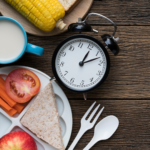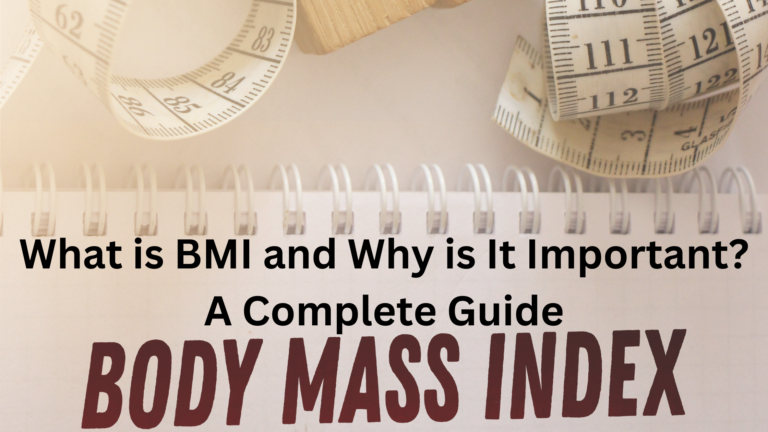Introduction: The Importance of Nutrition in Early Pregnancy
The first trimester of pregnancy, covering 1 to 3 Month Pregnancy Diet Chart, is a crucial time for both the mother and the developing baby. During this period, the foundation for the baby’s growth, development, and overall health is laid. Many pregnant women experience unique dietary needs and changes during these early months, which can be managed through a well-structured 1 to 3 Month Pregnancy Diet Chart. A balanced and nutrient-dense diet is essential for fetal growth, reducing complications, and ensuring that expecting moms stay energized and healthy.
The Role of a Proper Diet During Early Pregnancy
Eating a nutritious diet is crucial for both supporting your baby’s development and reducing common pregnancy symptoms like nausea, fatigue, and dizziness. The 1 to 3 Month Pregnancy Diet Chart emphasizes a diet rich in protein, folic acid, vitamins, and minerals, ensuring that the mother receives the essential nutrients needed during the first trimester for optimal health and wellness.
Understanding Your Nutritional Needs in the First Trimester

The first trimester of pregnancy, spanning from week 1 to week 12, is a critical period in your baby’s development. During this time, your body undergoes significant changes, and providing the right nutrients is essential for both your health and the health of your growing baby. A balanced diet during this stage is crucial, and a well-planned 1 to 3 Month Pregnancy Diet Chart can help guide you through this early phase. By understanding your nutritional needs and how they evolve during the first trimester, you can ensure that you’re getting the nutrients that are essential for both your well-being and the baby’s development.
Why is Nutrition Important in the First Trimester?
The first trimester is when your baby’s major organs and systems, including the heart, brain, and spinal cord, begin to form. This period of rapid growth requires a nutrient-rich diet to support these changes. The 1 to 3 Month Pregnancy Diet Chart helps ensure that you’re eating the right foods, providing essential nutrients that not only support your baby’s development but also help your body adjust to pregnancy, preventing complications like fatigue, nausea, and anemia.
A 1 to 3 Month Pregnancy Diet Chart is specifically designed to ensure that you get all the essential nutrients in the right amounts. This period of pregnancy is also when many women experience morning sickness, so having a structured plan for meals can help minimize discomfort and provide steady energy.
Key Nutrients and Foods for the First Trimester
During the first trimester, your body’s nutritional needs will increase. To create an optimal 1 to 3 Month Pregnancy Diet Chart, it’s important to include key nutrients that are crucial for both maternal and fetal health. Here are the essential nutrients and the foods you should focus on during this time:
1. Folic Acid (Vitamin B9)
Folic acid is one of the most important nutrients during the first trimester. It helps prevent neural tube defects, which affect the brain and spinal cord. Your body needs extra folic acid during pregnancy, particularly during the early weeks.
- Sources: Leafy greens (spinach, kale), fortified cereals, legumes (lentils, chickpeas), avocado, and citrus fruits.
- Recommendation: The recommended daily intake is 400 to 600 micrograms of folic acid during the first trimester, often through prenatal vitamins.
2. Iron
Iron is necessary for making hemoglobin, the protein in red blood cells that carries oxygen. During the first trimester, your body needs more iron to support the increased blood volume that is required to nourish the growing fetus. Iron also helps prevent anemia, a common condition in pregnancy that can lead to fatigue and weakness.
- Sources: Lean meats, chicken, turkey, beans, lentils, spinach, fortified cereals, and tofu.
- Recommendation: Aim for 27 milligrams of iron daily. Including vitamin C-rich foods with iron-rich meals (such as oranges with spinach) helps improve absorption.
3. Calcium
Calcium is essential for the development of the baby’s bones and teeth, and it also helps in maintaining the strength of the mother’s bones. Adequate calcium intake during pregnancy can also prevent muscle cramps and support healthy nerve function.
- Sources: Dairy products like milk, yogurt, and cheese, leafy greens, fortified plant-based milk, and fortified juices.
- Recommendation: Aim for 1,000 milligrams of calcium daily during the first trimester.
4. Protein
Protein is crucial for the development of your baby’s cells and tissues. It also helps maintain your muscle mass, which is important for your overall health and for supporting the growing fetus. Protein needs increase during pregnancy, and it’s essential to incorporate enough protein into your daily meals.
- Sources: Lean meats, poultry, fish (low-mercury types), eggs, dairy, beans, legumes, nuts, and seeds.
- Recommendation: Aim for at least 60 grams of protein per day in the first trimester.
5. Vitamin D
Vitamin D helps the body absorb calcium and is essential for bone health. It also plays a role in immune function and the development of the baby’s organs.
- Sources: Fatty fish (salmon, mackerel), fortified dairy products, egg yolks, and exposure to sunlight.
- Recommendation: Aim for about 600 IU (international units) of vitamin D per day during pregnancy.
6. Healthy Fats
Essential fatty acids (omega-3s) are crucial for brain development and the growth of the baby’s nervous system. While the need for fat is increased during pregnancy, it’s important to focus on healthy fats and avoid trans fats or excessive saturated fats.
- Sources: Fatty fish (salmon, sardines), flaxseeds, chia seeds, walnuts, olive oil, and avocado.
- Recommendation: Include omega-3-rich foods like fish twice a week. Aim for healthy fats to make up about 25-35% of your total daily calories.
7. Fiber
Constipation is a common issue in pregnancy, especially during the first trimester. To avoid digestive discomfort, it’s important to include plenty of fiber in your diet.
- Sources: Whole grains (oats, quinoa), fruits (berries, apples), vegetables (broccoli, carrots), and legumes (beans, lentils).
- Recommendation: Aim for about 25-30 grams of fiber daily to help keep digestion regular.
8. Water
Hydration is critical during pregnancy, especially as your body increases blood volume and produces amniotic fluid. Drinking enough water helps support all bodily functions, including digestion and the transport of nutrients to the fetus.
- Recommendation: Aim for at least 8-10 cups of water a day, more if you’re physically active or experiencing nausea.
Sample 1 to 3 Month Pregnancy Diet Chart
Here’s an example of a 1 to 3 Month Pregnancy Diet Chart to help guide you during the first trimester. Keep in mind that this chart can be adjusted based on your preferences, lifestyle, and any specific advice your healthcare provider has given you.
Breakfast:
- Whole-grain toast with avocado and a boiled egg (protein and healthy fats)
- Fresh orange juice (for vitamin C to help iron absorption)
- A cup of fortified plant-based milk or yogurt (calcium)
Morning Snack:
- A small handful of almonds or walnuts (healthy fats)
- A banana (fiber and potassium)
Lunch:
- Grilled chicken breast or tofu with a spinach salad, topped with olive oil and lemon (protein, folic acid, and healthy fats)
- A small serving of quinoa (fiber and protein)
- A glass of water or herbal tea (hydration)
Afternoon Snack:
- Greek yogurt with chia seeds (protein and omega-3s)
- Fresh berries (vitamins and fiber)
Dinner:
- Baked salmon or lentils (protein and omega-3s)
- Steamed broccoli or other cruciferous vegetables (calcium and fiber)
- Brown rice (fiber and magnesium)
- A side of mixed greens with olive oil and vinegar (healthy fats and vitamins)
Evening Snack:
- A small bowl of mixed fruits (fiber and hydration)
- A glass of water or a cup of warm milk (calcium and hydration)
How the 1 to 3 Month Pregnancy Diet Chart Helps
A well-structured 1 to 3 Month Pregnancy Diet Chart helps you stay on track with the right nutritional intake, which is essential during this early stage of pregnancy. The key to a successful diet is variety, balance, and nutrient-dense foods. Not only does this ensure proper fetal development, but it also supports your overall well-being, reduces fatigue, and can help minimize common pregnancy symptoms like nausea.
Building a Weekly Meal Plan for Pregnant Women
Creating a weekly diet chart can help ensure variety and consistency. Here’s a breakdown:
- Monday: Emphasis on lean proteins like grilled fish or chicken with green leafy vegetables.
- Tuesday: Include iron-rich foods such as beans, legumes, and lentils with a side of vitamin C-rich fruit for better absorption.
- Wednesday: Opt for folic acid-rich meals like asparagus, avocado, and citrus fruits.
- Thursday: Include calcium-rich foods such as low-fat dairy, tofu, and almonds.
- Friday: Focus on whole grains and complex carbohydrates like brown rice, barley, and sweet potatoes.
Essential Superfoods for Early Pregnancy
Superfoods are nutrient powerhouses that are beneficial for pregnant women in the first trimester. Here are some superfoods that should be part of your 1 to 3 Month Pregnancy Diet Chart.
1. Spinach and Leafy Greens
Rich in folic acid, spinach and other leafy greens are essential for preventing birth defects. They also provide iron and fiber, which help prevent constipation, a common pregnancy complaint.
2. Lentils and Beans
A fantastic source of protein and fiber, lentils, and beans are easy to incorporate into various dishes. They also provide iron, which helps prevent anemia, a common condition in pregnant women.
3. Dairy Products
Calcium is critical for fetal bone development, and dairy products are among the best sources. Yogurt, milk, and cheese are excellent choices, as they also contain protein.
4. Eggs
Eggs provide high-quality protein and choline, essential for brain development. They’re easy to prepare and can be added to a variety of meals.
5. Nuts and Seeds
Almonds, walnuts, and chia seeds are rich in omega-3 fatty acids, fiber, and protein. They’re ideal for snacking and can be added to oatmeal, salads, or yogurt.
Hydration: Why Staying Hydrated Matters
During pregnancy, especially in the first trimester, your body goes through a variety of changes that require extra care and attention. One of the most important aspects of maintaining overall health and well-being during this time is staying properly hydrated. Hydration plays a significant role in supporting both your body and your baby’s growth, development, and energy levels. With the guidance of a 1 to 3 Month Pregnancy Diet Chart, ensuring you’re consuming the right amount of fluids can help you avoid common pregnancy discomforts, maintain essential bodily functions, and promote a healthy environment for your growing baby.
Why Hydration is Crucial in the First Trimester

In the early stages of pregnancy, your body undergoes numerous transformations, such as an increase in blood volume and the development of the amniotic sac that protects your baby. Proper hydration is crucial to supporting these physiological changes, and a well-balanced 1 to 3 Month Pregnancy Diet Chart can help ensure you’re getting enough fluids. Staying hydrated plays a key role in maintaining blood circulation, amniotic fluid levels, and overall maternal health during this critical period of your pregnancy. Here’s why hydration is so important during this time.
1. Supports Increased Blood Volume
During the first trimester, your blood volume increases to support the developing fetus. Blood is responsible for carrying oxygen and nutrients to the placenta, and it’s essential to have enough fluid to facilitate this process. Dehydration can lead to thicker blood, which makes it harder for your circulatory system to efficiently transport nutrients and oxygen, potentially putting stress on both you and your baby.
By following the 1 to 3 Month Pregnancy Diet Chart, which includes suggestions for fluid-rich foods and drinks, you can help maintain a healthy blood volume and avoid complications like dizziness or fatigue.
2. Helps Prevent Constipation
During the first trimester, pregnancy often causes digestive slowdowns due to hormonal changes, which can lead to constipation. To manage this, it’s crucial to stay hydrated, as drinking plenty of water supports proper digestive function and helps prevent constipation. Staying hydrated not only aids in regular bowel movements but also assists in the breakdown of food and nutrient absorption, reducing discomfort during early pregnancy. Including hydration tips in your 1 to 3 Month Pregnancy Diet Chart can be a helpful way to ensure you’re supporting your digestive system effectively during this critical time.
ester. Staying hydrated helps prevent constipation by keeping your digestive system moving smoothly and promoting regular bowel movements. Water also aids in breaking down food and absorbing nutrients more effectively, which can help reduce discomfort.
Including hydrating foods in your 1 to 3 Month Pregnancy Diet Chart, such as fruits (like watermelon and oranges) and vegetables (like cucumbers and tomatoes), can help alleviate constipation and keep your digestive system on track.
3. Alleviates Morning Sickness and Nausea
Morning sickness, common during the first trimester, can lead to dehydration, particularly if vomiting occurs frequently. Dehydration can worsen nausea and contribute to fatigue. To help manage this, it’s important to drink fluids consistently throughout the day. Staying hydrated will replenish lost fluids and may help reduce the severity of morning sickness symptoms. Including hydration strategies in your 1 to 3 Month Pregnancy Diet Chart can be an effective way to support your body and ease discomfort during this time.
The 1 to 3 Month Pregnancy Diet Chart can guide you to include hydrating options like ginger tea, which is known to reduce nausea, and coconut water, which can help with electrolyte balance.
4. Promotes Healthy Amniotic Fluid Levels
Amniotic fluid surrounds and cushions your baby in the womb, playing a crucial role in fetal development. It allows your baby to move freely, promotes proper lung development, and provides protection from injury. Maintaining proper hydration is key to ensuring the right amount of amniotic fluid, which is vital for your baby’s health. Including hydration tips in your 1 to 3 Month Pregnancy Diet Chart can help you stay on track and support both your health and your baby’s development during early pregnancy.
Your 1 to 3 Month Pregnancy Diet Chart can suggest foods that are high in water content, such as soups, smoothies, and fruits, which contribute to maintaining optimal hydration levels for both you and your baby.
5. Helps Regulate Body Temperature
As your pregnancy progresses, your metabolism increases, which heightens your body’s need for water. Staying hydrated is essential for regulating your body temperature and preventing overheating. Dehydration can cause your body temperature to rise, leading to fatigue, dizziness, or even fainting. Following a well-structured 1 to 3 Month Pregnancy Diet Chart can help ensure you’re drinking enough fluids, supporting your body’s natural ability to stay cool and comfortable throughout this important stage of your pregnancy.
Nutritional Tips for Managing First Trimester Symptoms
Many pregnant women experience nausea, fatigue, and food aversions during the first trimester. To help manage these symptoms, it’s important to focus on balanced nutrition. Here are some practical tips that can be included in your 1 to 3 Month Pregnancy Diet Chart to support your body during this challenging time:
1. Combatting Nausea
Eating small, frequent meals can help manage nausea during pregnancy. The 1 to 3 Month Pregnancy Diet Chart recommends including bland foods like crackers, toast, and bananas, which are gentler on the stomach. Ginger tea or ginger-infused snacks can also be beneficial for alleviating nausea, providing soothing relief during the early stages of pregnancy.
2. Managing Fatigue with Nutrients
Fatigue is common during early pregnancy, but following a 1 to 3 Month Pregnancy Diet Chart can help combat this. Incorporating iron-rich foods like spinach, lentils, and red meat can boost energy levels. Additionally, including complex carbohydrates such as whole grains provides a steady release of energy, helping you feel more energized throughout the day.
3. Dealing with Food Aversions and Cravings
If you experience food aversions during pregnancy, the 1 to 3 Month Pregnancy Diet Chart can help you find alternative foods that provide similar nutrients. For instance, if meat becomes unappealing, switch to protein-rich options like beans, lentils, and dairy products. When cravings arise, choose healthier versions of your favorite foods to satisfy your desires while maintaining a balanced diet.
Top 5 Folic Acid Foods for Expecting Moms
Since folic acid is vital during the first trimester, here’s a list of top folic acid foods to incorporate into your 1 to 3 Month Pregnancy Diet Chart:
- Spinach – A rich source of folate, iron, and fiber.
- Citrus Fruits – Oranges, lemons, and limes provide folic acid and Vitamin C.
- Avocado – Packed with folate, healthy fats, and potassium.
- Asparagus – One of the best vegetable sources of folic acid.
- Beans and Legumes – Chickpeas, black beans, and lentils are folate-rich and also provide protein.
Protein-Rich Foods to Include in Your Diet Chart
During the first trimester, protein plays a key role in cell repair and growth, making it essential for both the mother and baby. Including adequate protein in your diet is crucial during this stage. Here’s a list of protein-rich foods that should be part of your 1 to 3 Month Pregnancy Diet Chart to ensure you’re getting the nutrients you and your baby need:
- Chicken and Turkey – Lean, easy-to-digest proteins that are versatile and easy to prepare.
- Eggs – Besides protein, they provide choline for brain development.
- Greek Yogurt – A good source of protein, calcium, and probiotics.
- Lentils and Beans – These plant-based proteins are rich in fiber, too.
- Quinoa – A complete protein source that’s also high in fiber and other essential nutrients.
Foods to Avoid in the First Trimester
Certain foods can pose risks to the developing baby and should be avoided in the first trimester:
- Raw or Undercooked Meat – These carry a risk of harmful bacteria that can affect the baby.
- Unpasteurized Dairy Products – These can contain listeria, a harmful bacteria that should be avoided during pregnancy.
- High Mercury Fish – Fish like swordfish, shark, and king mackerel should be avoided due to their high mercury levels, which can harm your baby’s development.
- Excessive Caffeine – It’s important to limit caffeine intake to no more than 200 mg per day to avoid any potential complications.
When planning your meals, refer to your 1 to 3 Month Pregnancy Diet Chart to ensure you’re avoiding these risks and providing the safest, healthiest nutrition for both you and your baby.
Meal Prep and Planning for Busy Moms-to-Be

Planning and preparing meals in advance can make it easier to stick to a nutritious 1 to 3 month pregnancy diet chart. Here are some tips:
- Batch Cook – Prepare large portions of nutritious foods like soups, stews, and casseroles that can be frozen for easy access later.
- Healthy Snacks on Hand – Keep nutritious snacks like nuts, yogurt, and fruit readily available to curb hunger between meals.
- Quick Breakfast Options – Smoothies made with spinach, fruits, and Greek yogurt are an excellent, quick breakfast choice.
Including these convenient meal ideas in your 1 to 3 Month Pregnancy Diet Chart can help ensure you’re getting balanced nutrition without the stress of daily meal prep during the early stages of pregnancy.
Lifestyle Tips to Complement a Healthy Diet
Eating a balanced diet is essential for a healthy lifestyle during pregnancy, and the 1 to 3 Month Pregnancy Diet Chart can guide you in making the best food choices. Here are some tips for supporting your health during this important time:
- Gentle Exercise – Activities such as walking and prenatal yoga can help boost your energy and improve your mood during the first trimester.
- Get Adequate Rest – It’s important to prioritize rest as your body works hard to support your growing baby.
- Take Prenatal Vitamins – These supplements are crucial for ensuring you’re getting enough folic acid, iron, and other essential nutrients.
Incorporating these tips into your 1 to 3 Month Pregnancy Diet Chart will support both your physical and emotional well-being as you navigate the early stages of pregnancy.
Conclusion: Building a Healthy Foundation for You and Your Baby
The first trimester of pregnancy is a time of rapid change and development, both for you and your growing baby. During this crucial period, the foundation for your baby’s health and growth is established. This is why paying careful attention to your nutrition, especially in the early stages of pregnancy, is so important. By following a well-structured 1 to 3 Month Pregnancy Diet Chart, you can ensure that you’re providing both your body and your baby with the essential nutrients needed for healthy development.










